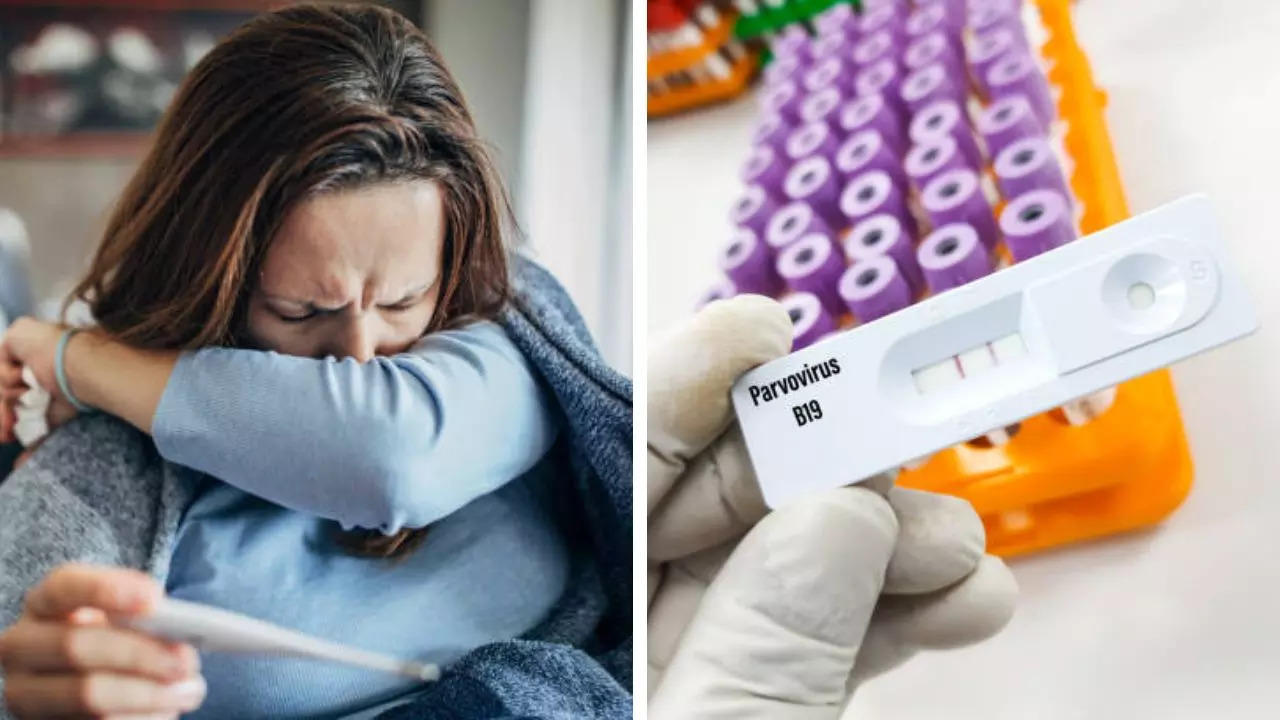Contents
What is parvovirus B19, the highly contagious virus the CDC has warned about?
The Centers for Disease Control and Prevention has issued the health advisory following a rise in cases of parvovirus B19 across the U.S. “Recently, CDC has received reports indicating an increase in the activity of parvovirus B19 in the U.S.,” the CDC said in its alert. Read on to know all about the highly contagious infection — its signs and symptoms and how to treat it.

Parvovirus B19 is a common infectious disease that spreads from person to person and often causes no or very mild symptoms
The US Centers for Disease Control and Prevention (CDC) this week issued a health advisory to doctors, healthcare providers and the general public following a huge increase in cases of the highly contagious parvovirus B19. “In the first quarter of 2024, public health officials in 14 European countries observed an unusually high number of cases of parvovirus B19,” the CDC said in its alert. “Recently, CDC has received reports indicating increased activity of parvovirus B19 in the United States.”
Here’s what you need to know about this deadly virus, how it spreads and is treated, and who is at highest risk.
What is parvovirus b19?,
Parvovirus B19 is a common infectious disease that spreads from person to person and often has no symptoms or very mild symptoms. The virus also targets the cells that mature into red blood cells, causing a temporary blockage in their production. The effect of this blockage is only evident in individuals who do not produce normal red blood cells. According to doctors, parvovirus spreads through respiratory droplets which means coughing and sneezing by people who are both symptomatic and asymptomatic.
The infection causes fifth disease, also known as “slapped cheek” disease – which is very common in school children. Even though it affects people of all age groups, you are more likely to have symptoms if you have a weakened immune system or a problem producing normal red blood cells.
How is parvovirus spread?,
Doctors say it is a very contagious virus. According to the CDC, 50 percent of people become infected after common household contact, while 20-50 percent of students and staff become infected during infections that occur at school. Antibodies acquired from previous infections are thought to last and provide protection against future infections. The CDC says 50 percent of adults have these antibodies by age 20, and that number rises to 70 percent by age 40.
Parvovirus B19 infection can also be spread from mother to fetus during pregnancy and through blood and plasma transfusions, although transfusion-associated parvovirus B19 infection is extremely rare.
Doctors say that pregnant women who become infected may have an increased risk of miscarriage, although most women become infected before pregnancy and are thus protected from infection.
Signs and symptoms of parvovirus infection
The signs and symptoms of parvovirus B19 infection in children may differ from those in adults. Some of these are:
- Swelling and pain in the joints
- Fatigue and extreme tiredness
- mild fever
- Persistent headaches
- upset stomach
- Arthritis
- Gloves and socks syndrome which is less common and usually occurs in adults
Doctors say that in infected children, parvovirus causes your and your baby’s bodies to stop producing new blood cells — leading to severe anemia.
In addition, many people who are infected with parvovirus B19 do not develop any symptoms. Those who do have symptoms experience them in two phases – the first, which begins about a week after infection – and includes fever, muscle aches, sore throat and fatigue, and the second, which begins 7-10 days after the first phase.
How is parvovirus treated?
Doctors say that parvovirus is usually self-limiting and disappears on its own. For most people in good health, no treatment is needed. However, it is important to drink plenty of fluids and get enough rest. Most cases of fetal parvovirus B19 infection during pregnancy resolve without any negative consequences. However, there is a 5-10 percent risk of fetal anemia or miscarriage if the mother is infected between the 9th and 20th weeks of pregnancy.
Get the latest news on Times Now as well as breaking news and top headlines from across health and the world.


